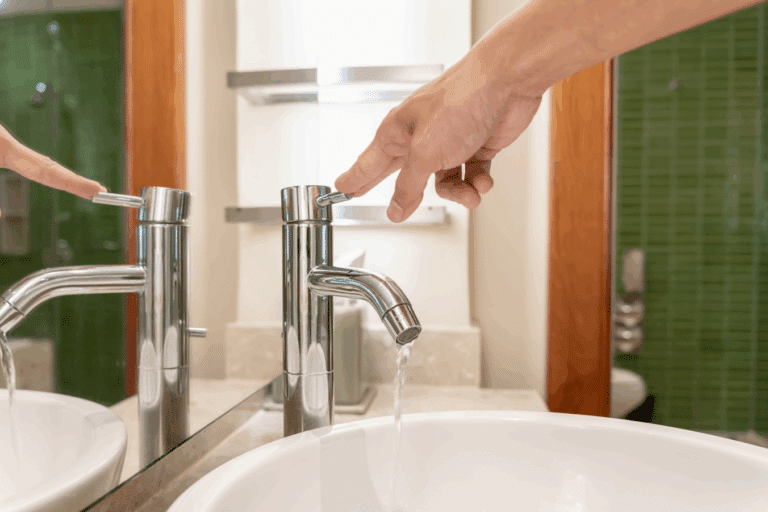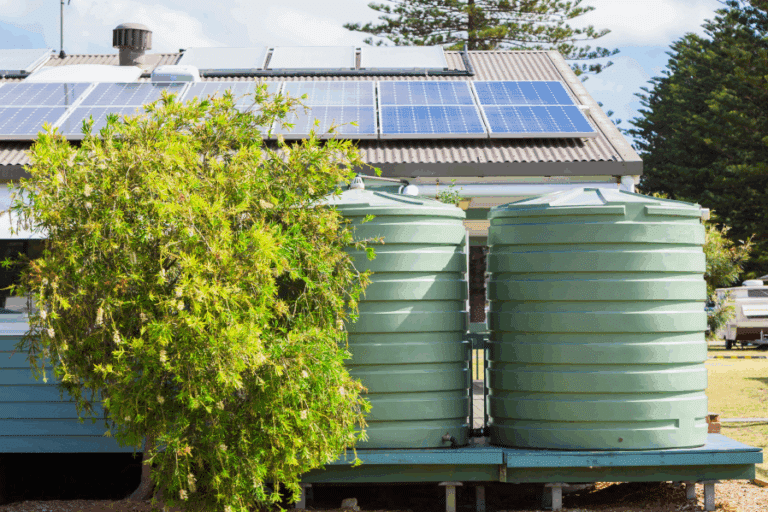Water consumption analysis
1. Measure and monitor your water consumption
Monitor water consumption with the help of meters and sub-meters
- Identify the equipment/stations that consume the most water;
- Control the consumption of these main consumption points;
- IdentP leaks or operational problems related to abnormal water consumption;
- Assess the situation for future integration into an action plan;
- Set specific consumption indicators.
Differentiate usage based on operational activities
- During building cleaning activities (e.g. floors, windows, walls, and façades);
- In sanitary facilities (e.g. toilets, sinks, showers);
- In the kitchen, canteen, catering areas, and associated equipment;
- In laundry facilities, if the company operates its own.
Implementation of various water-saving measures
Install water leak detectors and repair identified leaks within a short timeframe
It is advisable to regularly monitor the water usage by using smart meters, which make assessments possible. This enables the early detection of any water consumption anomalies and allows for the implement an action plan.
⛔A dripping tap is equivalent to a loss of 5 litres of water per hour, or 120 litres per day, which amounts to nearly 43m3 per year.
⛔A leaking toilet flush equals a loss of at least 15 litres of water per hour, which amounts to 360 litres of water per day and approximately 131 m3 per year.
Alternatively, periodic and systematic manual monitoring can be implemented.
Choose water-efficient equipment or retrofit existing facilities
Whether in case of a new construction or a renovation, it is important to make buildings as water-efficient as possible, for instance by fitting equipment that consumes little or no water. Informed choices can be made based on ecolabels, which are granted to products that meet certification criteria guaranteeing a reduced impact on water consumption, pollution, and the environment.
Examples of European labels for different bathroom fittings:
Practical tips
In case of renovations involcing retrofitting, it is also important to ensure that the associated installations are properly sized and that system pressure is correctly set, by following the recommendations of suppliers and installers.
A simple pressure reducing valve on the subnetworks can save water or avoid unnecessary waste.
For specific and sector-specific appliances, finding out from manufacturers which equipment is water-efficient and recommended.
Further information:
Formalise water consumption targets in contracts with service providers
In order to involve the entire value chain in the company’s water management measures, it is recommended to include specific requirements in the calls for tenders and to add relevant clauses to contracts related to the construction and operation of the building.
Add low-flow fixtures in the different spaces
- For showers:
- Install water-saving showerheads
- For taps:
- Install new water-saving fixtures, or add flow-regulators or aerators that adapt to existing equipment; these have a fast return on investment.
- When choosing taps, prioritise type C2 cartridges, which reduce water consumption by half (to 4.5 l/min by default).
- Consider infrared systems to supply water on demand (saving 50 to 60%).
- Use time-delay fixtures for ON/OFF sequences, adjustable as required.
- For toilets:
- Install dual-flush control plates
- General:
- Install a pressure reducing valve if the water pressure exceeds 3 bar, to avoid overconsumption.
Pay attention to the water consumption of electrical appliances
- Purchase appliances with high energy and water efficiency ratings (e.g. dishwasher, coffee machine, etc.).
- Choose appliances that meet environmental sustainability standards (e.g. Energy Label, EU Ecolabel).
- Ensure regular maintenance and calibration of appliances
- Optimise operating processes, for example by using “Eco” modes and running appliances only when fully loaded
Raise staff awareness by implementing active changes and a suitable training programme
- Encourage water-saving habits and behaviour change to ensure that all employees act responsibly.
- Use showers and taps wisely, limiting the time the water is left running and use the correct toilet flush button as needed.
- Use the dishwasher instead of washing up by hand. Ensure it is fully loaded before starting it. Fill the kettle with only the required amount of water.
- Report any leaks immediately.
- Display posters to remind staff of good practices.
- For more details, refer to the Water Awareness measure.
Implement a water-related action plan
- An action plan can be developed once consumption points have been mapped out through a water assessment.
- The action plan should include building operating procedures and implement monitoring indicators to measure the impact of improved water management.
Integrate strict strategies for water management in the buildings
- Meeting recognised standards, such as those required for certifications, improves the building’s water management and overall sustainability performance. Green-certified buildings typically benefit from higher market value, reduced operational costs, and a stronger brand image.
- Reconised certifications include BREEAM, DGNB, LEED, and LENOZ.
Further information:
Consult an engineering office
Have an analysis conducted by an approved engineering office, while benefiting from the state subsidies below.
State subsidy application
State subsidies
Please note: any application for government or non-government subsidies must comply with the “incentive effect”, subject to compliance with the subsidy conditions.
In order to respect the “incentive effect”, no binding commitment (signing a quotation; paying a deposit) may be made BEFORE having received the agreement in principle from the State or the electricity and natural gas supplier following an application for subsidy.
Subsidy for small and medium-sized companies, covering up to 70% of eligible costs for carrying out a project aimed at reducing their environmental impact. The total project cost must be between €3,000 and €25,000 excluding VAT.
The Fit 4 Sustainability programme provides co-financing for an environmental audit and action plan, including the water assessment (consumption, quality).
Subsidies of up to 50%, 60% and 70% of the fees for carrying out an environmental study (energy audit and/or carbon footprint) and detailed, costed action plan to reduce one’s consumption/GHGs (greenhouse gases) (medium- and long-term investment, ROI, etc.) – open to SMEs and large companies (except those required to carry out a statutory audit).
N.B. State subsidies cannot be combined for the same project.
Use alternative water sources to drinking water
In efforts to rationalise water use in buildings, particularly for certain applications such as toilet flushes, which do not necessarily require drinking water, it is possible to use non-potable water.
Rainwater, for example, can be harvested by installing a rainwater storage tank (above or below ground). Click here for more details on this topic.
Once consumption has been reduced, there may be many other opportunities to substitute drinking water by considering:
- Sump water
- Condensates, concentrates, or purge water from equipment
- Water discharged by air purification systems
- Water from other water recovery strategies or recycling systems (water sharing, etc.)
- Grey water from showers and washbasins in toilet facilities
A qualitative and quantitative study, along with appropriate treatment where necessary, is often required to ensure that the water is suitable for its intended use.
For these applications, it is also important to monitor the volume consumed by:
- regularly reviewing whether the required water quality level is necessary, based on regulations or operational needs;
- Identifying potential alternatives to the public drinking water supply, such as the use of harvested rainwater;
- developing and implementing a water-saving action plan.

